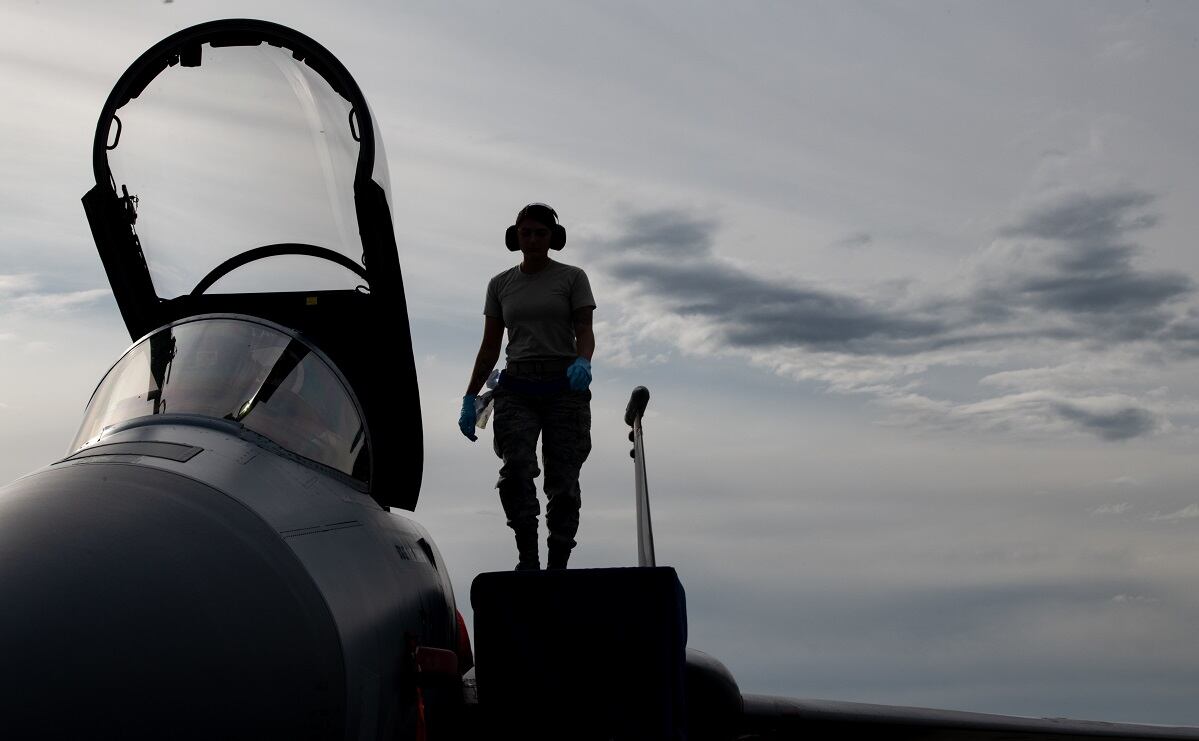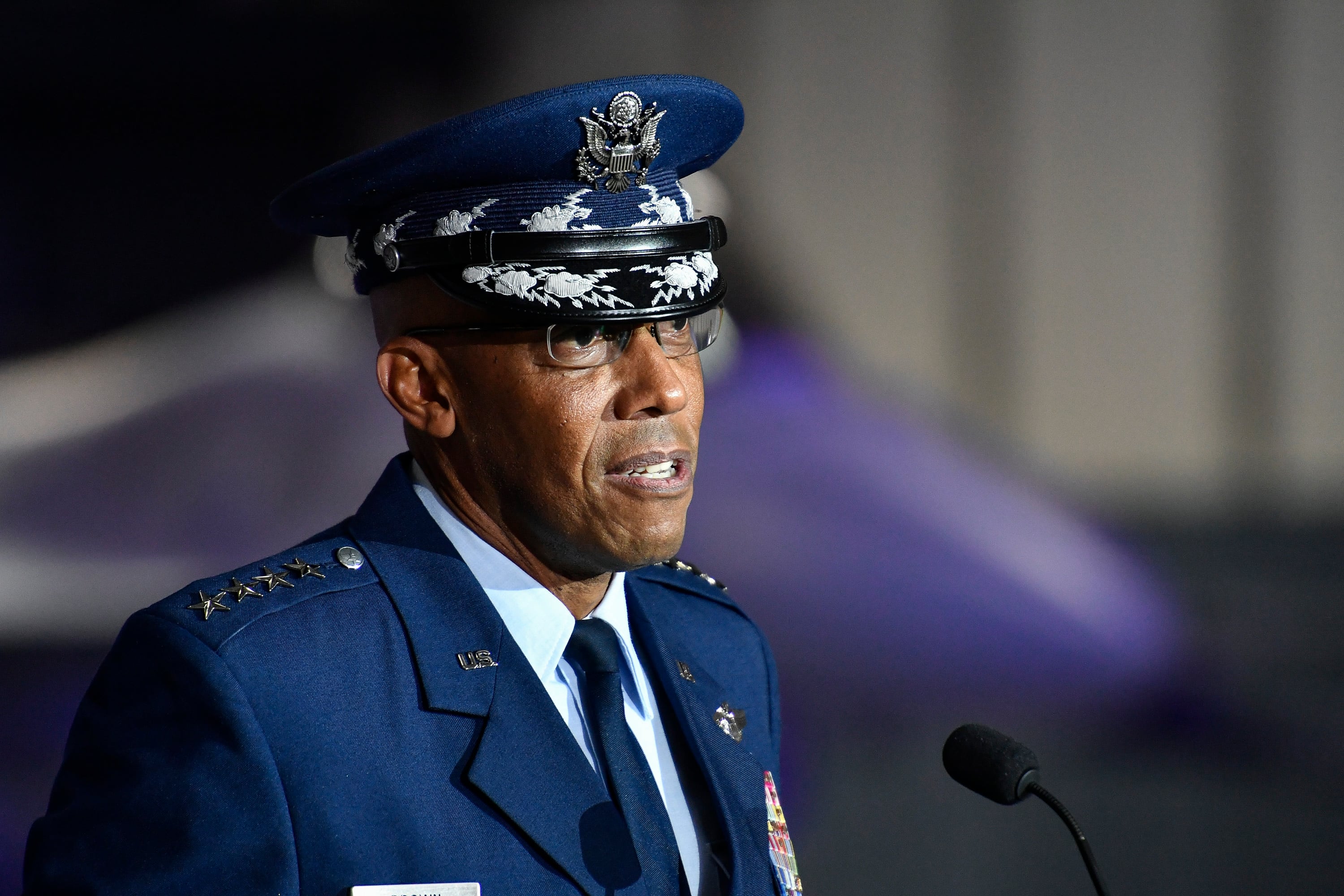The Air Force’s new chief of staff, Gen. Charles “CQ” Brown, on Monday warned that the service can’t count on significant end strength growth, and will have to make better use of the airmen it already has if it wants to win a war against a major adversary.
That will mean moving airmen out of jobs that aren’t really helping accomplish the Air Force’s mission and into jobs that are undermanned or emerging as crucial requirements, Brown said in a conference call with reporters.
Brown issued a document Monday, “Accelerate Change or Lose,” that spells out how the Air Force must adapt to a new reality in which the United States’ military dominance is no longer assured, and peer nations such as China and Russia are increasingly aggressive and emboldened.
The document represents the first look at Brown’s top priorities and concerns since assuming command as the Air Force’s top officer Aug. 6. It builds upon the Pentagon’s 2018 National Defense Strategy, which called on the military to shift its focus away from fighting violent extremists toward preparing for more highly contested fights against peer or near-peer nations.
It contains several ways in which Brown said the Air Force needs to adjust its personnel strategy to better take care of airmen and apply their talents.
Brown said he plans to expand on his call for change in his address at the Air Force Association’s Air Space Cyber conference in September.
The next war, Brown said in the document, is likely to be highly contested and could see “combat attrition rates and risks ... that are more akin to the World War II era than the uncontested environment to which we have become accustomed” since the Gulf War.
And, Brown warned, the U.S. risks losing a war if its military does not adjust to this new reality.
“If we don’t change — if we fail to adapt — we risk losing the certainty with which we have defended our national interests for decades,” Brown wrote. “We risk losing a high-end fight. We risk losing quality airmen, our credibility and our ability to secure our future.”
As the Air Force shifts, Brown said, it needs to change its processes and force presentation to improve its readiness, how it generates combat power and how it fights wars. Part of that includes “repurposing manpower to emergent and under-resourced requirements,” Brown wrote in the document.
RELATED

In a conference call with reporters, Brown could not say exactly which areas will need more manning.
As he’s traveled around over the past decade or so, he commonly heard unit commanders say they could get more things done if they had more manpower.
But realistically, Brown said, commanders can’t count on that.
“I tell them, you know what? The end strength for our United States [Air] Force is not growing,” Brown told reporters. “Even if it did grow a little bit, you might see one person in your organization. And you probably wouldn’t even notice it.”
So the Air Force is going to have to figure out how to get the job done with essentially the same levels of manpower it has now, he said.
Air Force leaders — particularly the heads of major commands — need to take a hard look at the missions the Air Force is doing, figure out which jobs aren’t actually adding enough value for the challenges ahead, and put those airmen to better use.
Brown said that in his previous role as commander of Pacific Air Forces, he commonly asked his commanders what he could take off their plates to free up airmen to do more worthwhile things.
He pointed to how the Air Force has adapted to the coronavirus pandemic as an example of how the service can figure out how to run more efficiently, and then shift airmen to where they’re better needed.
“When I talk to folks, we are not really missing a lot of things that we’re not doing” during the pandemic, Brown said. “We’re just doing it differently, with people teleworking.”
Brown acknowledged that not everyone will be pleased by these changes.
“There’s going to be some people that aren’t happy, but we’re going to have to make some unhappy people … in order to make sure we can get all the mission sets done and provide what the Air Force does provide to the nation,” Brown said.
The Air Force’s fiscal 2021 budget calls for 512,100 total force airmen, which would be an increase of 1,500 over fiscal 2020. But that would be a much smaller increase than the 4,000 to 5,000-airman increases the service saw in previous years after the sequestration’s drawdown ended.
Brown also said the Air Force needs to change how it deploys airmen to joint forces overseas, and how it organizes those forces at home.
The Air Force now has several models for airmen to prepare to deploy, deploy, and then reset when they come back home, Brown said. It’s sometimes hard for the Air Force to understand how it does this, he said, let alone joint partner forces.
“That’s one of the things I want to dive into, get a bit more detail to figure out, what may be the best model that provides a level of readiness” for deployed airmen and those in-garrison, he said.
Brown’s document also calls for continuing the efforts of his predecessor, Gen. Dave Goldfein, to delegate decision-making authority down to the lowest level of leader who is capable of making those calls.
In recognition of the adversaries the Air Force could face next, Brown calls for the service to “develop and build deep institutional understanding of China and Russia, and reward and retain those airmen who foster the personal attributes necessary for success in the challenging future ahead.”
Stephen Losey is the air warfare reporter for Defense News. He previously covered leadership and personnel issues at Air Force Times, and the Pentagon, special operations and air warfare at Military.com. He has traveled to the Middle East to cover U.S. Air Force operations.





